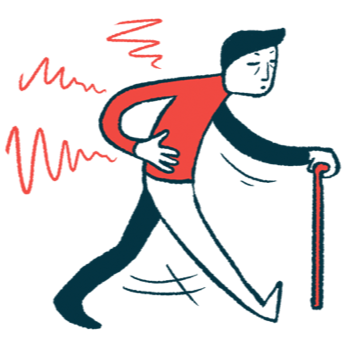Spinal cord stimulation may aid Parkinson’s posture problems: Study
In SCS, small electrical currents are delivered directly to nerve cells in the spine

Spinal cord stimulation (SCS) was able to safely improve postural problems for people with Parkinson’s disease, according to a very small trial in China.
Among the six patients who had the procedure, some gains in aspects of motor function were observed, although the findings were variable, but the researchers say they offer proof-of-concept for more studies to explore the benefits of SCS in Parkinson’s.
“The short-term and long-term effects of SCS on patients with [Parkinson’s disease] constitute a highly valuable research topic,” the scientists wrote in “Spinal cord stimulation for postural abnormalities in Parkinson’s disease: 1-year prospective pilot study,” which was published in BMC Neurology. “Clinical trials with a large number of participants are needed.”
Problems with posture are common in Parkinson’s. They can arise from muscle stiffness and rigidity or from changes in nerve circuits in the brain and spine involved in automatically correcting posture.
Postural issues may include anterior thoracolumbar flexion, where the trunk of the body leans forward, or is “hunched” toward the ground, or lateral trunk flexion, where the trunk leans to one side. These issues can make patients less stable when walking, increasing the risk of falls.
The symptoms don’t always seem to respond to standard Parkinson’s medications, especially as they become more advanced, so new ways to manage these issues are needed.
Treating postural issues with SCS
SCS, where small electrical currents are delivered directly to nerve cells in the spine, has been considered for various symptoms of Parkinson’s disease. It’s not known exactly how it works, but it’s thought to be able to reset motor nerve circuits in the spinal cord.
It’s similar to deep brain stimulation (DBS), an approach already used to ease Parkinson’s motor symptoms, but targets nerve cells in the spinal cord rather than the brain.
Small studies and case reports have found the procedure can ease pain and improve gait problems for patients. SCS didn’t improve mobility in advanced Parkinson’s patients in a clinical trial, however.
Here, the scientists reported findings from a pilot study (ChiCTR1900024326) wherein SCS surgery was performed in six patients with postural abnormalities (mean age, 70), at their hospital in China.
The surgery involved implanting small electrodes into the lower thoracic area, a middle section of the spine, to which an external stimulation device can deliver electrical currents to nerve cells.
The patients were followed for a year after surgery, during which time they continued on any standard Parkinson’s medications. Assessments of posture and motor function were performed when the patients were actively on medication and the SCS stimulator was turned on.
A significant improvement in posture was observed at the one-year follow-up compared with before the surgery, or baseline. Specifically, the mean lateral trunk flexion degree improved by 58% and the anterior thoracolumbar flexion degree improved by an average of 32%.
Motor function didn’t significantly improve, but most patients saw some improvements in rigidity, finger and toe tapping, and motor function of the lower extremities.
Three patients were tested separately in the SCS on-state and off-state to confirm the surgery’s efficacy. These patients generally saw improved spine angles and better motor function scores when the stimulator was on than when it was off.
The surgery and stimulation were safe and no adverse events were reported.
The researchers believe the findings support using SCS for managing posture problems in Parkinson’s.
“Lower thoracic SCS may be effective for improving [postural abnormalities] in [Parkinson’s disease] patients, but further studies are needed to confirm this conclusion,” wrote the researchers, who noted the “mechanism of how SCS works on posture is not very clear” and may involve various areas of the spinal cord and brain.







